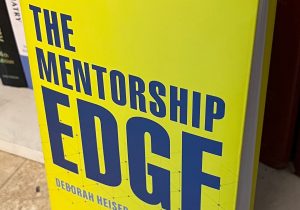Why Write a K24?
Midcareer faculty often wish for more support and time to mentor, but many aren’t aware that NIH has a mechanism that does exactly that. K24 awards are the NIH’s best-kept secret. Many institutes have success rates of over 50%, some up to 80% or even 100%. If you’re an MD or PhD at the Assistant or Associate Professor level with an established, independent program of patient-oriented research and a solid track record of mentoring new clinical investigators, why wouldn’t you write a K24?
Here are the top five reasons to write a K24:
1. Get salary support for mentoring.
It takes time, energy, and a lot of work to be a good mentor. You remember the qualities of the mentor that helped you. Why not emulate the best of these, and get salary support for this work? The K24 will provide salary for levels of effort between 3-6 person-months (or between 25 and 50% full-time effort). There are different levels depending on the institute. It is important to read the different guidelines provided by each participating institute.
2. Grow academically.
Stagnant thinking is an impediment to your research and professional development. The K24 gives you an opportunity to think creatively about where you want your career to go. Do you want to learn a new skill or technique, or develop a logical extension of your current skillset? You can make a case for either. The K24 supports clinical research that directly engages human subjects. This could include studies of mechanisms of human disease, therapeutic interventions, clinical trials, or… (You don’t need a track record in clinical research to apply, by the way.)
3. Develop expertise in new technologies.
Innovation is vital to research progress. New techniques and methods require time and training. Perhaps you want to take this opportunity to develop expertise in a new research technique? The NIH will provide up to $50,000 per year for research expenses, travel to research meetings, training, and statistical services.
4. Explore new research avenues.
As always, the research description should emphasize novelty, significance, creativity, approach, and your ability to carry out the proposed research. Maybe you are a basic scientist who wants to study clinical populations, or you want to study a different disease-state. Take this opportunity to reorient or expand your research focus. The candidate background and career goals section provides a great opportunity to summarize where you have been and where you are going.
5. Invest in people.
Recreating yourself is the key (IMO) to avoiding burnout. Use this grant as an opportunity to do just this. My suggestion is to take a step away from the business of life, even if it is for a morning, and reflect on the importance of investing your time and energy in someone else’s life. Writing this grant becomes an opportunity to take stock of your current and aspirational mentoring approach. When you write the “candidate approach to mentoring” section, take the opportunity to reflect on your lab structure, mentoring approach, and how you will create an environment that invests in the lives of others.
Participating Institutions
NHLBI
NIA
NIAAA
NIAMS
NIAID
NIDCD
NIDA
NIEHS
NIMH
NINR
NCCIH
RFA for clinical trials.
RFA without clinical trials.
Are you writing a K24? If so, let us know what motivates you!
MORE RESOURCES
Scholarly Activities for a Remote Lab








1 Comment
I am an entreprenure and successful SBIR grantee. I have 30 years of drug development experience (10 Academic + 10 Industrial + 10 Entreprenure). I have been mentoring many entrepreneurs, undergraduates and even high school kids. First small business eligibility, second: Budget and third cycles of submission.